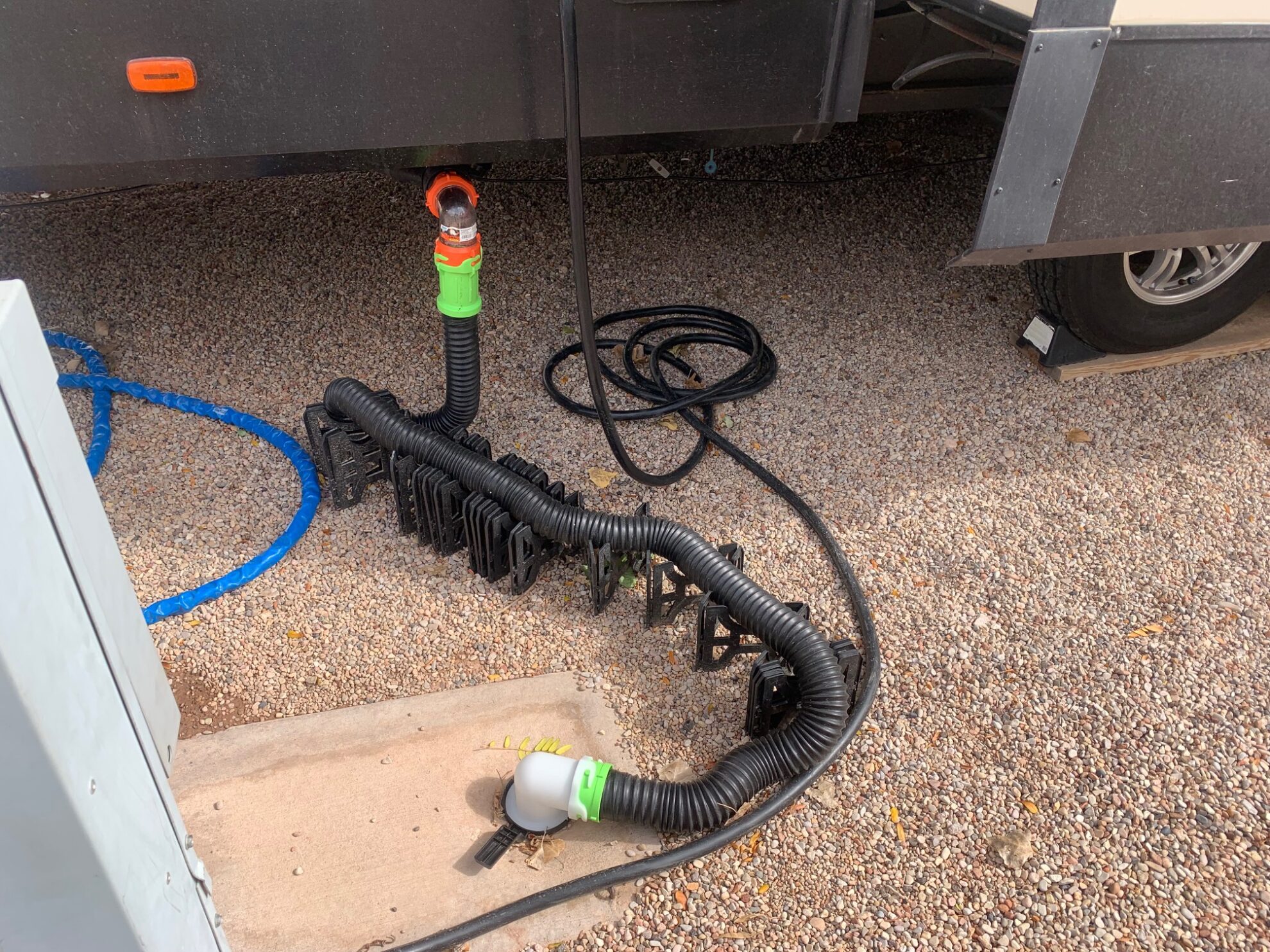Thanks for your support! If you make a purchase using our links in this article, we may make a commission. And, as an Amazon Associate, I earn from qualifying purchases. See the full disclosure here.
Updated April 18, 2024
Can you combine your RV black and gray water tanks? The very simple answer is yes but more importantly, you need to ask: why would you want to combine black and gray water tanks? While this might sound like an unusual question, it really isn’t that odd and you will find it’s a very easy process.
Combing your RV black and gray water tanks can make a lot of difference in your tank capacity, particularly for those who spend a lot of time boondocking. Some RV manufacturers are even installing a combined black and gray water tank in newer models.
I know you’re thinking this can’t be possible. It is. Before we get into it, let’s go over a few of the basics of black and gray tanks.
- What’s the Difference Between Black Water and Gray Water?
- Why are RV Black and Gray Tanks Separated?
- Are Black Water And Grey Water Tanks The Same Size?
- What Size Are RV Waste Water Tanks?
- How to Transfer RV Gray Water to the Black Water Tank
- Why Combine RV Black and Gray Water Tanks?
- Can You Add A Waste Water Tank To Your RV?
- Are Gray Water Tanks Necessary?
- Can You Discharge Gray Water on the Ground?
- What do I do if Black Water Spills onto the Ground?
- Final Words About Combining RV Black And Gray Water Tanks.
- Related Reading:
- Mike Scarpignato – Bio
What’s the Difference Between Black Water and Gray Water?
Basically, RV black water tanks hold the waste that comes from your toilet. RV Gray water tanks hold the water that comes from your sinks and shower requiring a higher storage capacity.
Black water tanks don’t need to hold as much and usually have a smaller liquid capacity. A toilet flush doesn’t require much water compared to a shower.
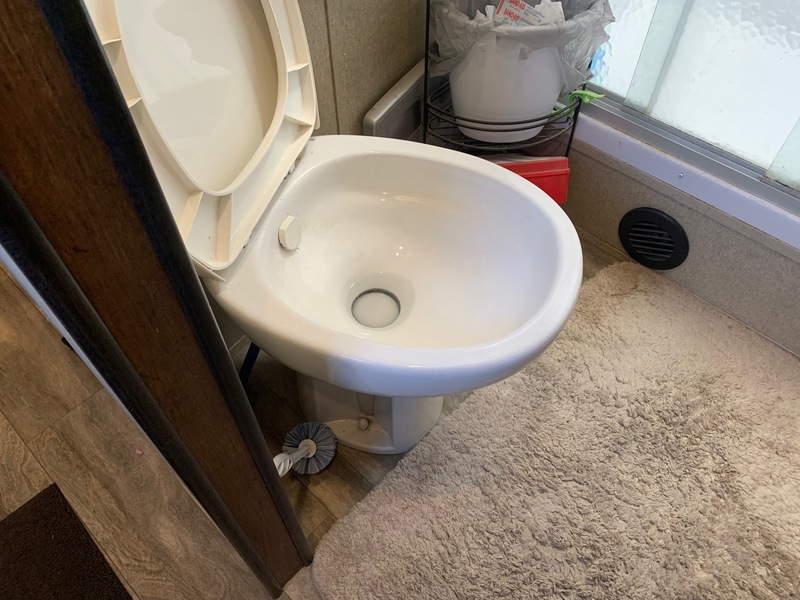
Why are RV Black and Gray Tanks Separated?
Black tanks cannot ever be emptied into anything other than a septic system. Doing this would cause harmful bacteria to be on the ground, spreading disease. Emptying your gray tank onto the ground can result in legal fines or worse if you’re a repeat offender.
Separating the tanks allows you to store the most wastewater until you can safely empty them at an RV dump station.
Are Black Water And Grey Water Tanks The Same Size?
In general, there are three tanks in an RV: grey, freshwater, and black, and, in most circumstances, these tanks are of all different sizes. Grey water tanks hold the wastewater that drains from your showers and sinks throughout the RV.
Black tanks hold the waste from your toilets. Freshwater tanks…well, that one is a little more obvious. These three tanks vary in size based on the size of the camper and the sleep capacity. An RV manufacturer is well aware that an RV that sleeps 8 will need larger tanks than one that sleeps 3.
Some RVs won’t have all three tanks, depending on the design and what’s expected of the consumer. For instance, a very small RV may lack a black tank, and the RVer will have to use a composting toilet or another portable option.
What Size Are RV Waste Water Tanks?
Like any other tank on an RV, there is no one size. The sizes of the tanks are so numerous, across so many different brands, floorplans, and camper types that it’s difficult to convey an average without being inaccurate to most people’s situations.
If you’re happy with a range of numbers, a black tank size may run between 15 and 70 gallons, though there are exceptions to that as well.
How to Transfer RV Gray Water to the Black Water Tank
In most RVs, the gray water and black water tanks are separated but come together to flow through the same opening when it comes time to dump the tanks.
Something as simple as a twist-on gate valve can be purchased at Walmart, Camping World, and other retailers that have camping supplies. This piece will allow the black and gray water tanks to be connected and for the liquid to flow between the two tanks.
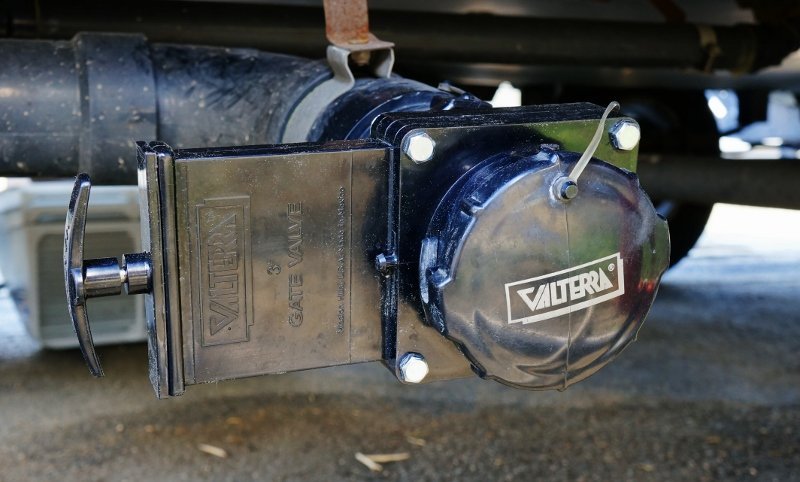
Once the gray tank is full or has more content than the black, close the gate valve, open the gray tank, and let the pipe fill. Then open the black and gravity will allow the gray to equalize with the black.
Once they equalize, close the black and gray. You want to be very careful to watch the tank capacity. You don’t want gray water backing up into your shower or sinks.
Why Combine RV Black and Gray Water Tanks?
Why would you want to do this? This is a great idea if you’ve converted to a composting toilet. In that case, you don’t need your black tank and you can use it to hold the overflow of the gray water tank giving you more gray water capacity.
You don’t need to dump as often when you are boondocking and you can stay out longer. You also don’t really need to worry about which tank flows into which if they are all gray water.
A composting toilet is a great eco-friendly alternative to a traditional version. They minimize the use of water by mixing the waste with sawdust or peat moss and eliminate odor through an anaerobic processing system.
Cassette toilets are also a water saver. You can sanitarily empty them at a dump station or public restroom. These are great for small truck campers or RVs that don’t have a black tank.
There really are no negatives to combine RV black and gray water tanks, I believe it’s more a matter of choice. If you haven’t replaced your toilet with a composting toilet or cassette toilet, or you don’t boondock a lot, then you probably don’t need or want to do this.
In particular, you don’t want a black and gray water tank overflow or your black wastewater flowing into your gray tank because you may get odors through the sink and shower.
Can You Add A Waste Water Tank To Your RV?
It’s not impossible to add a new tank to an RV, wastewater, or otherwise. There are some unique challenges involved, such as mounting, drainage, and the overall cargo-carrying capacity of the RV.
For instance, you may want to add a freshwater tank and remove the black tank, opting for the above-mentioned composting toilet in exchange for extra fresh water. If you can find the extra space in the frame to fit it, you can probably install one.
Are Gray Water Tanks Necessary?
Manufacturers are building RV models with a combination of black and gray water tanks. This combined tank needs to be large enough to handle both the black and gray water. According to RV builders, this makes plumbing costs of manufacturing go down.
You can check out these smaller models that already have combined black and gray water tanks.
Fish House- Forest River Grey Wolf 21GP
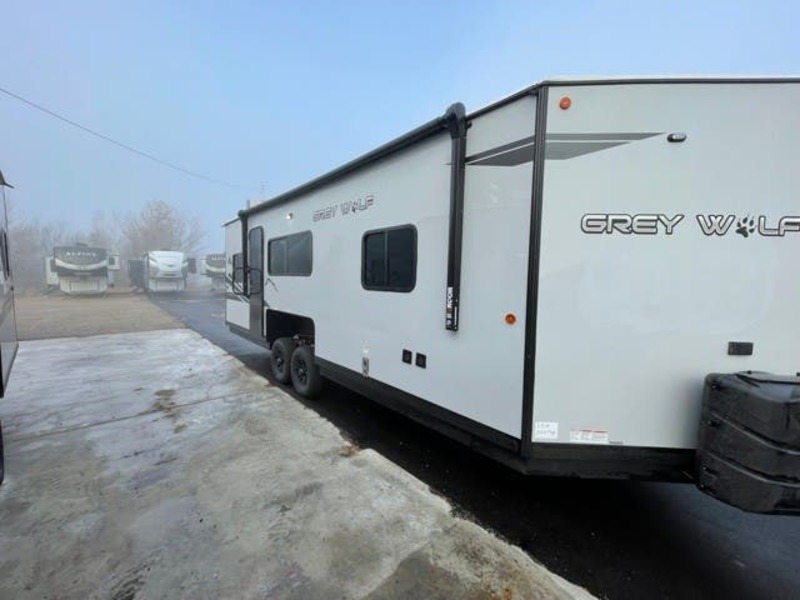
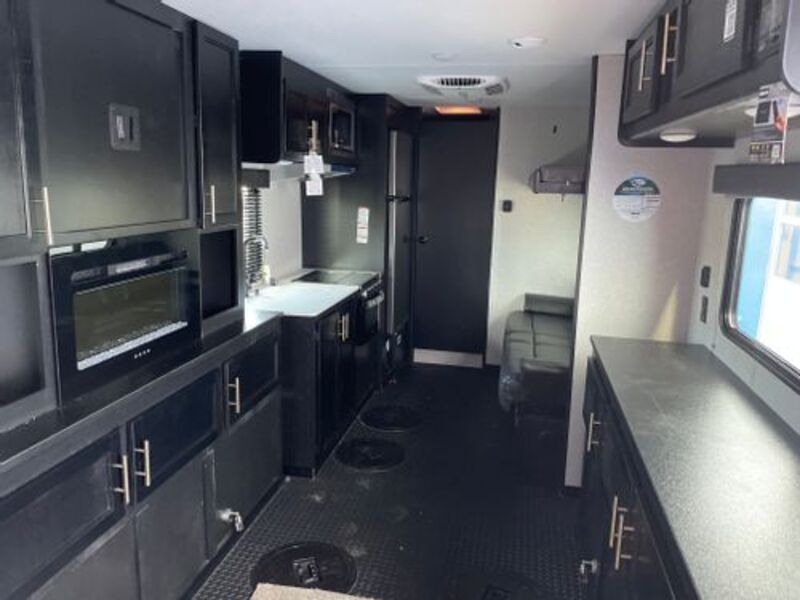

- Length: 32.2 ft.
- UVW: 6,338 lbs.
- Fresh Tank: 15 gal
- Fishing Holes: 8
- CCC: 3,517 lbs.
- GVWR: 9,855 lbs.
- Combo Black-Gray: 23 gal
- Sleep: 4-6
Although a relatively small trailer at 32 feet in length, the Grey Wolf Fish House 21GP by Forest River is one that combines the gray tank and black tank. This model is designed for ice fishermen with 8 holes built-in, as well as a fishing rod storage system.
It features a residential toilet and shower with a 23-gallon holding tank, as well as a full-size refrigerator and hydraulic lift system.
Truck Camper- BunduTec USA Wild

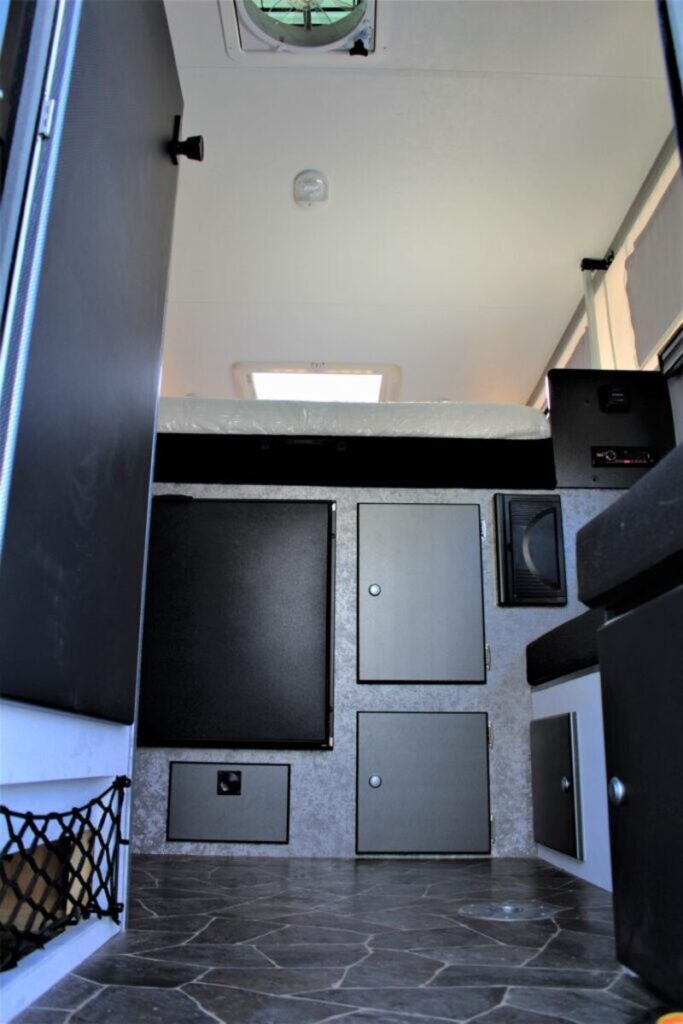
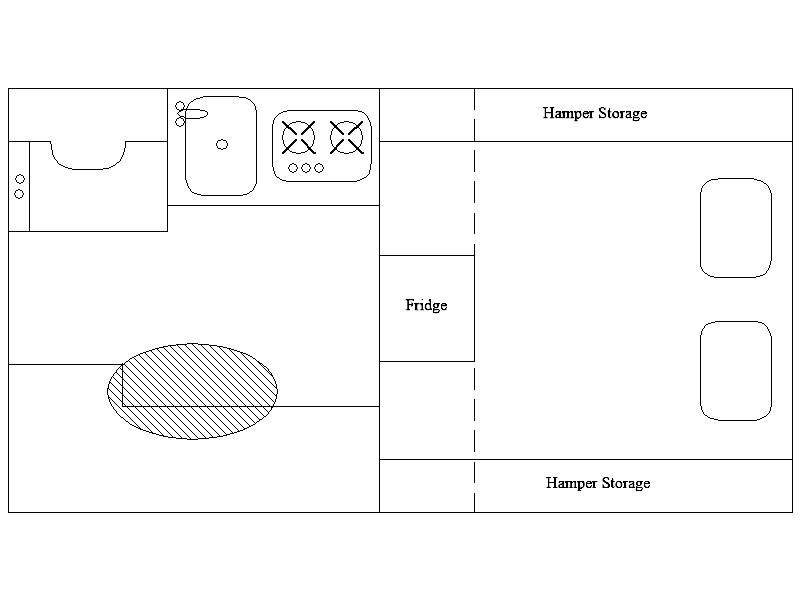
- Truck Level: Half-Ton
- Exterior Length: 12.67 ft.
- Dry Weight: 1,630 lbs.
- Fresh Tank: 20 gal
- Bathroom: Wet bath
- Fresh cassette 4 gal
- Black cassette 5.1 gal
- Cargo Bed: Short/ Standard
- Floor Length: 7 ft.
- Center of Gravity: 25 inches
- Gray Tank: 11 gal
- Solar Panel: 170w/340w (opt)
- Battery: AGM
The Bundutec Wild truck camper also makes use of a cassette toilet making the combined wastewater capacity 17 gallons. It has a wet bath, which along with the holding tank, makes this truck camper unique. It also has a 20-gallon freshwater tank and compressor refrigerator.
You can choose to add a 170-watt or 340-watt solar power system and a 3,000-watt inverter. A wrap-around awning and water heater furnace are also available.
Gray tanks are certainly necessary if you need to be self-contained. If you have an eco-friendly toilet and no shower or sink, you certainly don’t need a gray water tank.
Can You Discharge Gray Water on the Ground?
Discharging gray water on the ground violates city, county, and state environmental laws. I’ve heard of some people doing this in a boondocking situation, but I am not suggesting you do this. Please check the rules on where you are camping before you decide to do this.
There are different rules depending on where you are camping. Bureau of Land Management (BLM) agency rules state that wash water can be drained onto the ground. Other agencies such as the U.S. Forest Service, National Park Service, Army Corp of Engineers, and U.S. Fish and Wildlife Service, don’t allow gray water to be dumped anywhere except approved receptacles.
Most campgrounds, of course, require RVs to be self-contained, meaning they must capture all wastewater, black and gray.
Although it may seem like gray water is harmless, it likely contains harmful bacteria, mildew, and other things. It also contains substances such as dish soap which could negatively affect the environment. Dumping gray water near a stream or underground aquifer could also affect the quality of the water it enters.
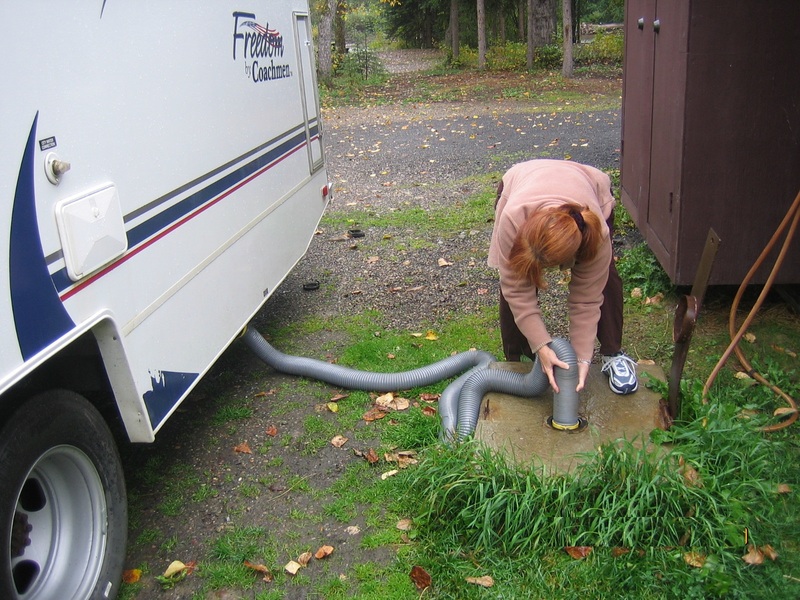
What do I do if Black Water Spills onto the Ground?
A blackwater spill can cause a danger to people, pets, and the environment. Ecoli can live in the environment for up to 70 days. Cover the spill with garden lime and let stand for 24 hours. You should be able to scoop up the dried substance and dispose of it properly.
For small spills, you can also use bleach, just make sure not to get bleach on any natural surfaces like grass or plants. A sewage removal company may need to be contacted to adequately get the spill cleaned.
Final Words About Combining RV Black And Gray Water Tanks.
I had never really considered what it would mean to combine the black and gray water tanks in an RV but my research says it’s a pretty common thing to do. When I told my husband you could actually do this, he was very skeptical.
He wanted to know how you did it without dropping the tanks, drilling holes, and making a “connector” between the two tanks. Since he’s the one who empties the tanks, I had second thoughts about what might be possible. I could not believe how simple the process is.
It’s my understanding that black and gray water tanks were originally separated because gray water was emptied onto the ground. Environmentally, this is not a sound practice, and most places where you camp require your RV to be self-contained.
YouTube is full of people who combined their black and gray water tanks and have shown their viewers how they could do it too. If you are a boondocker, this could mean a longer stay at your site without having to leave to empty your tanks.
In some cases, you might nearly double your tank capacity. Combining the tanks is as simple as purchasing a twist-on waste valve which is the piece needed to get this job done.
If you have a cassette toilet or a composting toilet, you most certainly should take advantage of combining your black and gray water tanks since you don’t need a black water tank.
Finally, check out some newer models that already have the two tanks combined. There aren’t many, but RV manufacturers are starting to combine the black and gray water tanks on smaller RV models to maximize wastewater capacity. This may be a great benefit for your RV needs.
Related Reading:
– RV Hookups Explained (Water, Sewer, Electric)
– How to Dump RV Tanks at Home – Complete Guide with Video!
– How to Clean Your RV Black Tank in 3 Simple Steps
– Is It Safe To Sanitize Your RV Water Tank With Vinegar?
Mike Scarpignato – Bio
Mike Scarpignato created RVBlogger.com over five years ago in 2018 to share all we have learned about RV camping.
Mike is an avid outdoorsman with decades of experience tent camping and traveling in his 2008 Gulf Stream Conquest Class C RV and 2021 Thor Challenger Class A motorhome.
We attend RV Shows and visit RV dealerships all across the country to tour and review drivable motorhomes and towable trailers to provide the best evaluations of these RVs in our blog articles and YouTube videos.
We are 3/4-time RVers who created RVBlogger.com to provide helpful information about all kinds of RVs and related products, gear, camping memberships, tips, hacks and advice.


